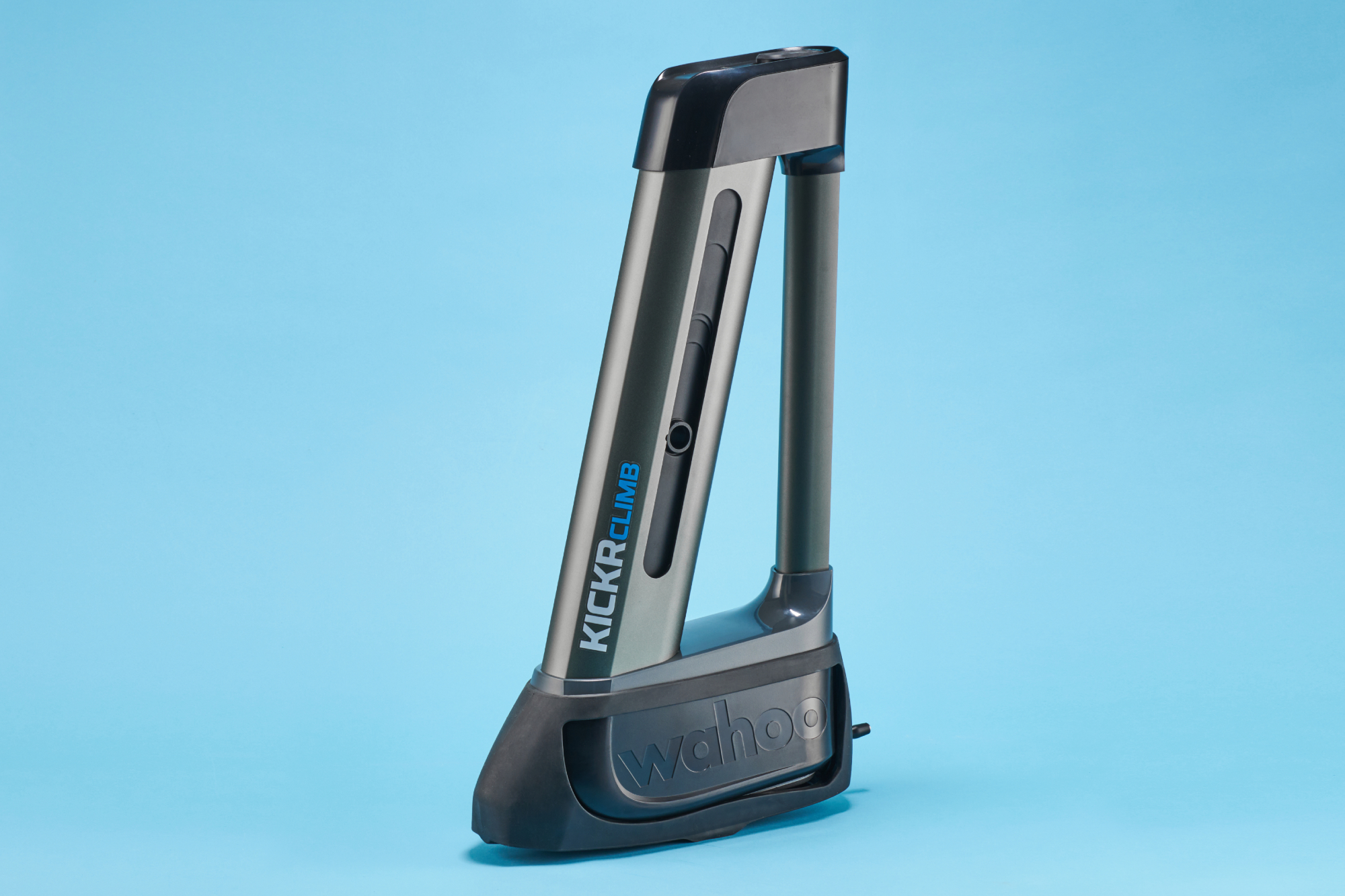
The Climb is Wahoo’s “grade stimulator”. Sitting in place of your front wheel the motorised unit raises and lowers the front end of your bike, stimulating inclines between +20 and -10%. Once paired with your smart trainer and training app, the Climb simulates the incline changes of the road on your screen to give – what Wahoo claims – is a “truly immersive indoor training experience”.
We went indoors to see how much difference it made to riding the best of the smart trainers.
Wahoo Kickr Climb: construction
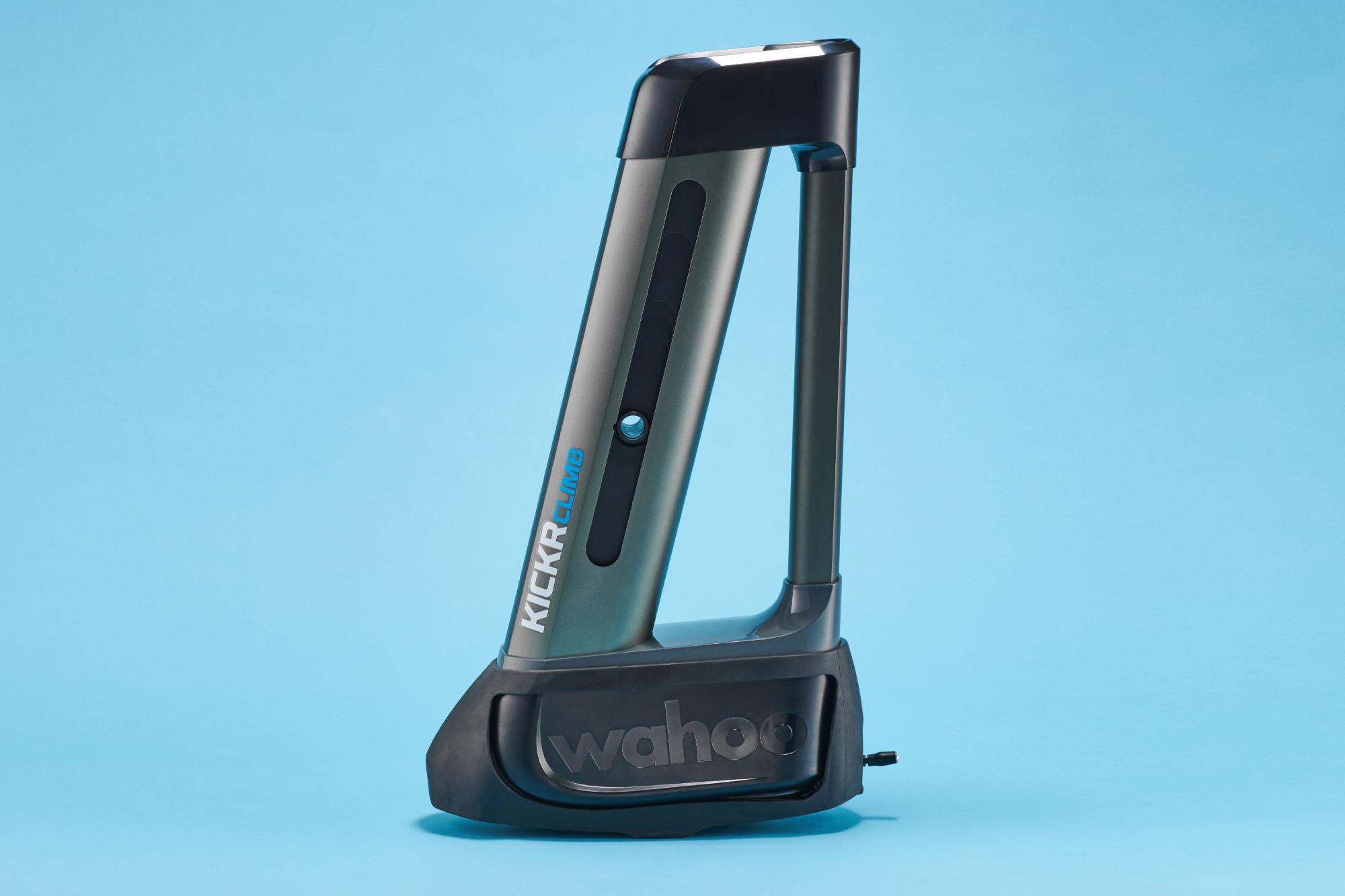
Setting up the Climb is really easy. Just remove your front wheel, select the correct pair of adapters according to your axel and fit the Climb in place. If you’re using the Climb with the Wahoo Kickr Move as we did, then you’ll also need the base adapter which is available separately.
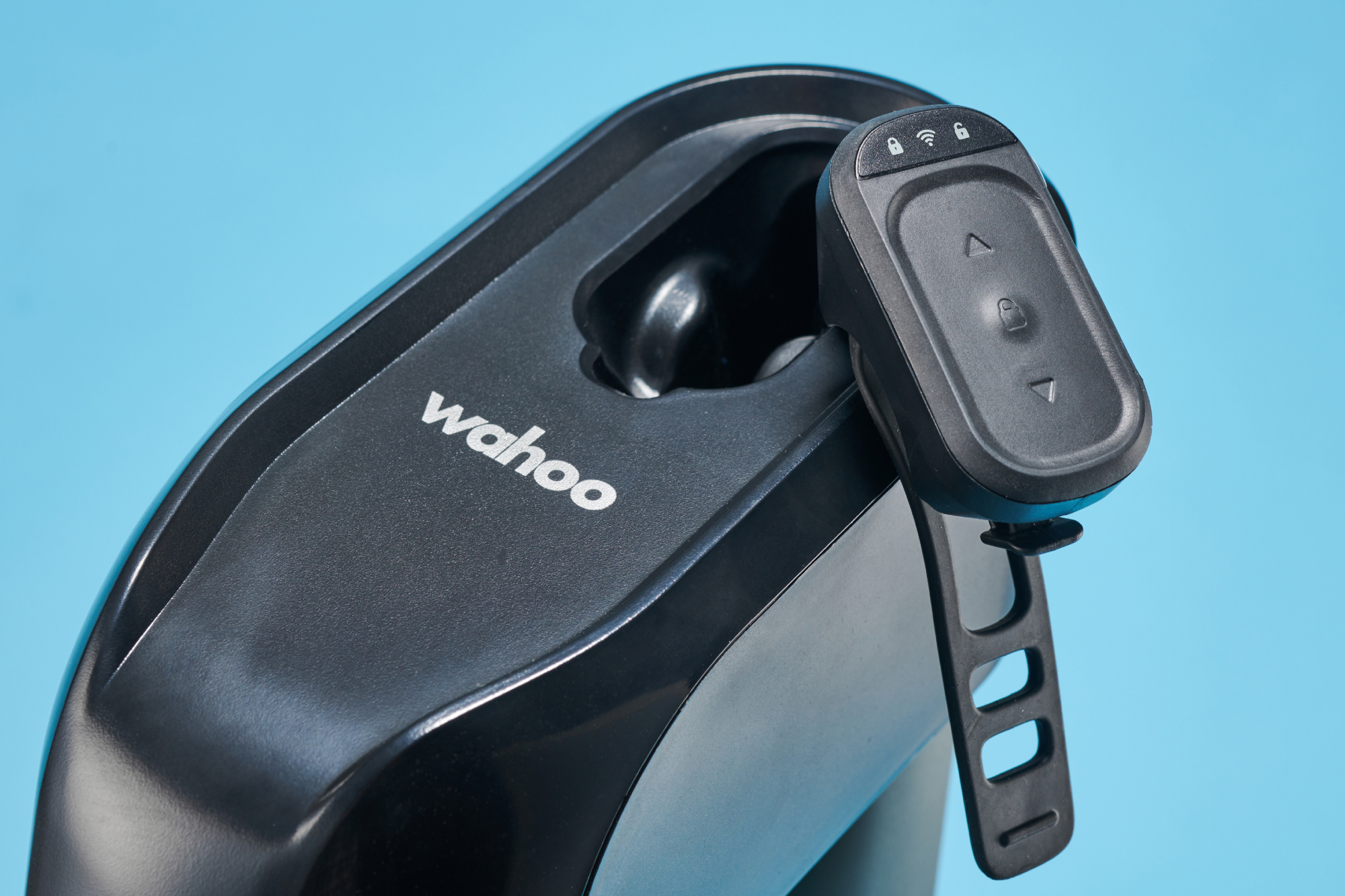
In terms of bikes, you can fit any bike with a standard hub onto the Climb. Adapters are included for quick-release, 12x100, 15x100, and 15x110 front hubs. Non-standard hubs – like the Cannondale Lefty – aren’t compatible.
Unlike many smart trainer add-ons, the Climb can only be used with Wahoo’s own trainers (including the Wahoo Kickr Snap, Wahoo Kickr Core and Kickr Move), and only post-2017 models. If you’re unsure what model you have, Wahoo have a checker on the website.
There is a control switch you can leave on the Climb or mount onto your bars through which you can lock the Climb or manually change the gradient.
Technologically the Climb connects directly to the KICKR at the press of a button. Once paired you can see the Climb in your connected apps and directly control through the Wahoo app. During testing we haven’t had any connection issues (which makes for a pleasant change).
Wahoo Kickr Climb: The ride
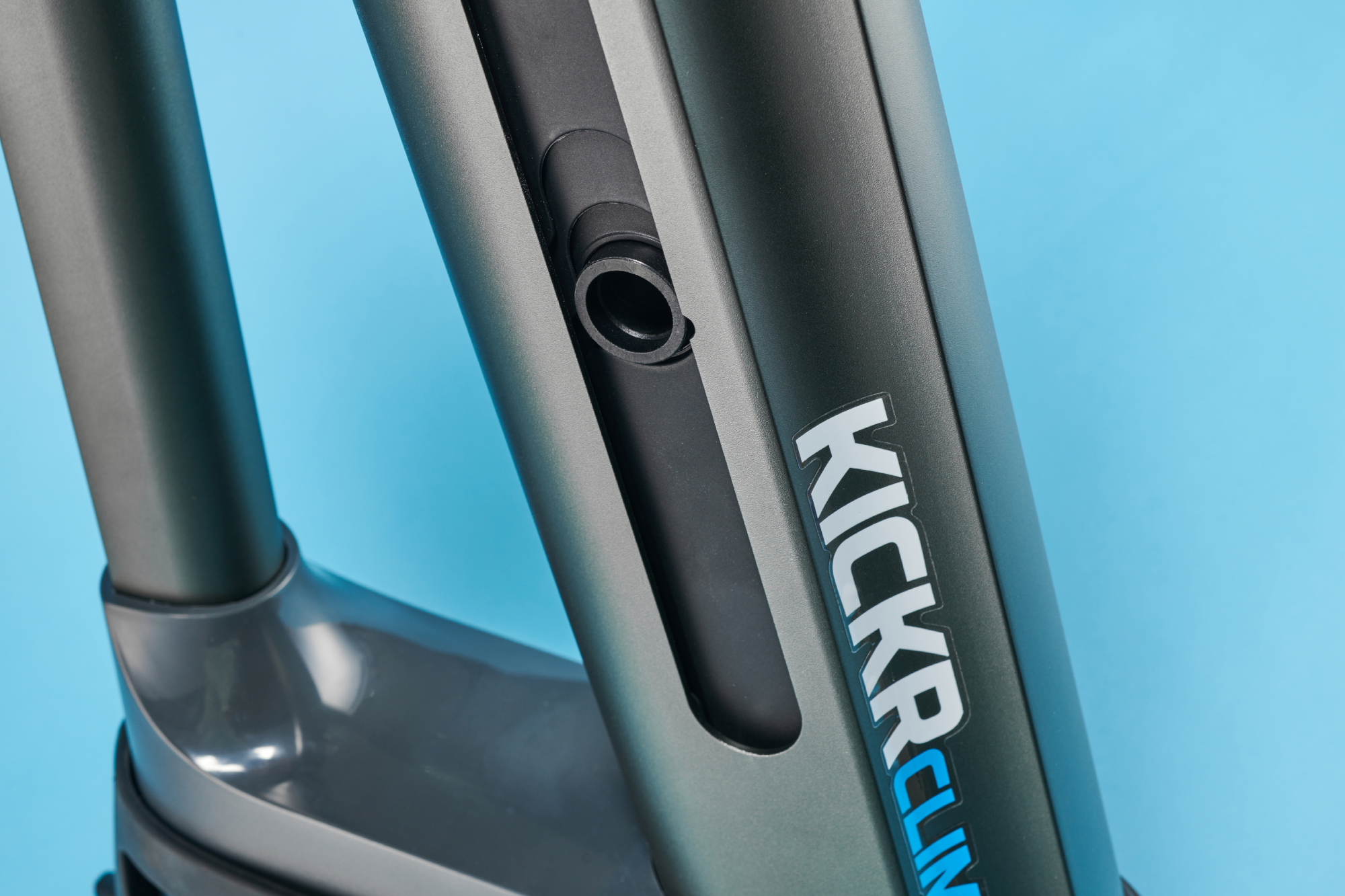
We rode with the Climb using Wahoo X, Zwift and manual control (you are not limited to Wahoo X and Zwift, the CLIMB will work with any third-party app). If you have a Wahoo head unit you use it to follow sessions or previously ridden routes, this is exclusive to Wahoo units though and not something we tried for this review.
The Climb and Kickr get on and do the job they’re designed to do. And they do it all very well; it really is as simple as that. The trainer resistance is brilliantly synchronised with the changes in incline, all as dictated by your virtual training session or course.
As you’re still not moving anywhere, even with the Climb the change in effort for a hill comes from the trainer’s resistance not gravity. The Wahoo Kickrs are so good at doing this that it overshadows the effect of the Climb on smaller gradients. But once the elevation reaches something more significant – be it up or down hill – the impact of the Climb is much more obvious. I even found myself tucking down out of the ‘wind’ on long descents as my body matched my bike position.
But the real benefit doesn’t come from virtual aero tucks. On the bigger ascents (roughly >4-5%) there’s enough change of your bike angle to really to shift your body to a climbing position and pedalling dynamics. The steeper the incline and the longer the climb, the more you can feel muscle groups engaging differently. This makes the Climb a great tool if you really want to improve your climbing ability rather than just improve the ability to grind out over-geared efforts.
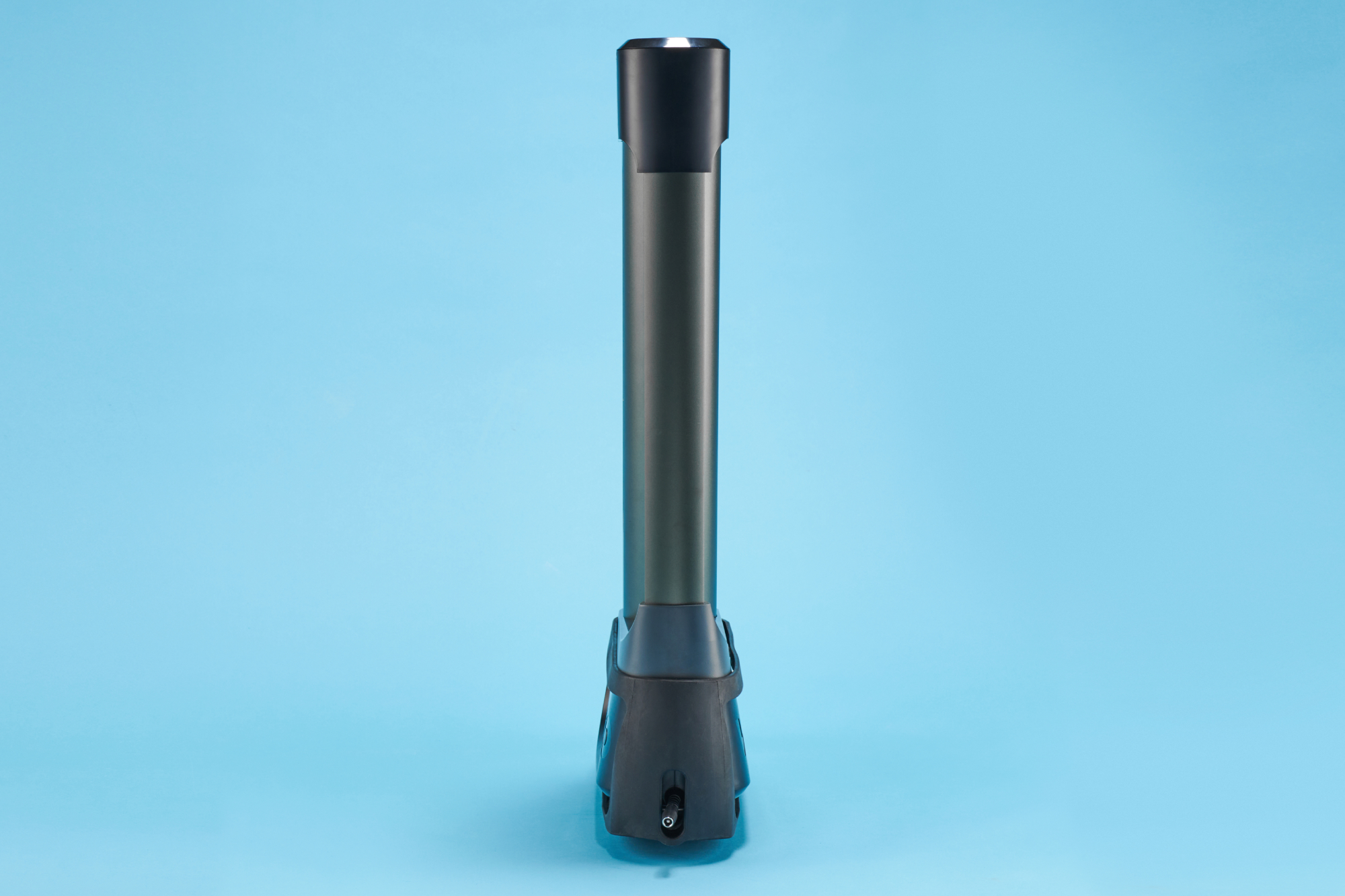
As well as the training effect that comes with engaging muscles differently, all this change of gradient means there are constant shifts in your position on the bike. These movements have the potential to keep you riding more comfortably and for longer.
Much like the Kickr itself, the ride feel from the Climb is very, very good, but it’s not perfect. We found on sudden big hill kicks the change in resistance of the trainer didn’t time as well with the movement of the Climb. Where outside momentum carries you into the climb so you feel the change of incline before the increase in resistance, it was the other way round on the trainer, with the resistance coming before the elevation. We’re being a bit picky - it’s certainly not a deal breaker - but something for the software development list.
We also found that when really putting the power down out the saddle the Climb has an unnatural side-to-side motion as it rocks on its base. Like that of the Kickr Move, it feels like a movement you have to control, limiting your ability to push through the pedals and pull on the bars. It is not a problem with steady, seated climbing but will be a drawback if you favour powering over the tops.
The wired control unit allows you to alter the gradient, “return to flat” and dis/able app-lead changes. It’s a neat feature (literally and metaphorically) and good to have a simple way of controlling things mid-ride so you don’t have to deal with menus and a touch screen (ERG setting, we’re looking at you).
But, the functionality of this control unit is a bit limited as it doesn’t have a display to show your gradient and, if you’re not following a session on a head unit or app, the resistance drops as you raise the Climb. This means you’re still reliant on the control and readings from your app (and your gears outside an app-led session). If you always ride with a training app open this won’t be much of a problem, but it does lessen the ability for the Climb to be used to complete rider-led hill climb training sessions and seems a bit of a design oversight.
The final drawback of the Climb is the bulk of the whole unit and its power cable and transformer. Unless you’ve got plenty of room and some well-placed sockets these are going to take some arranging and, of course, makes your whole set up harder to move out the way if you don’t have a dedicated space. I had the benefit of using Wahoo’s full-ecosystem but even then found it was difficult to keep the Wahoo Kickr Headwind fan, Desk, Climb and Kickr Move cables out of the way of each other. You’ll also need a place to stow your front wheel and the spare adapters.
Wahoo Kickr Climb: value and conclusion
The Climb will set you back a considerable $700 / £530. That is considerably less than the Elite Rizer, which comes in at $1,099 / £824.99 - although the Elite system is compatible with any smart trainer brand, whereas the Climb does tie you in to Wahoo's broader 'eco-system'.
Still, although the Climb is cheaper the the Rizer, it's still very much very much a pertinent question whether $700 / £530 is really a price you want to pay. If you are heavily committed to improving your climbing prowess and virtual ride feel, then yes, it would likely be a solid investment. But if that's less of a concern for you, this is one piece of equipment you can probably do without.







